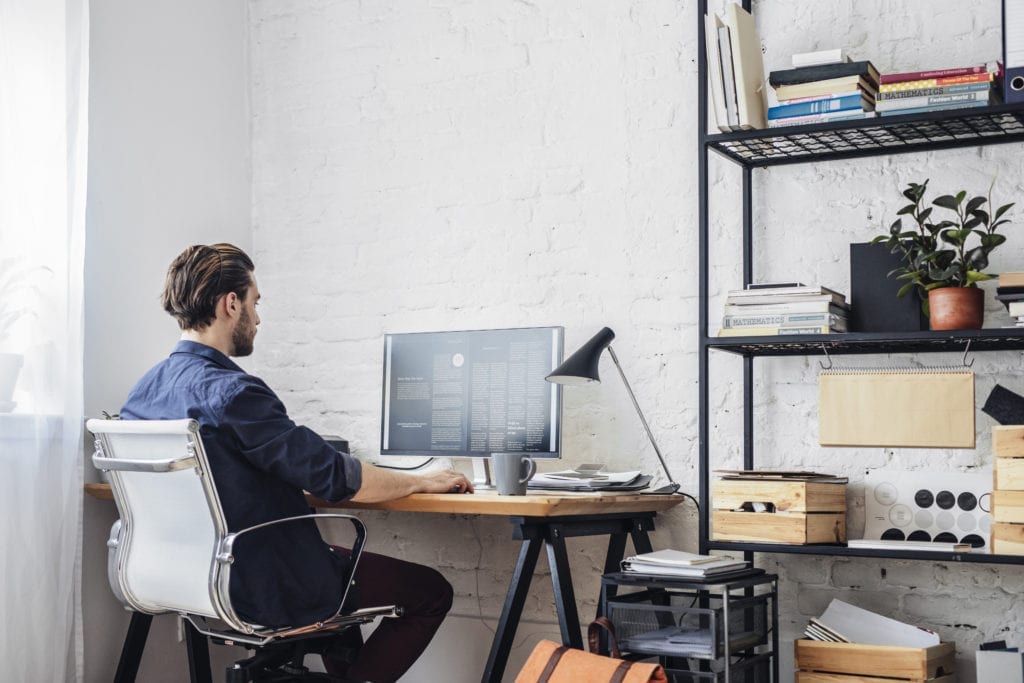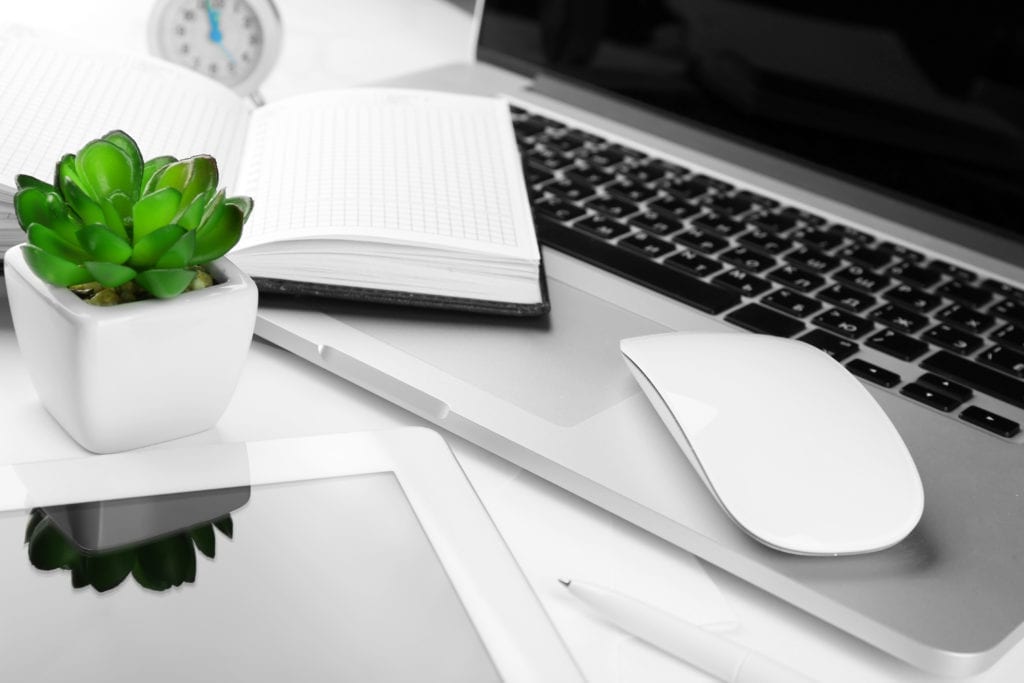Working life has been evolving over the last 5 years; flexible working is becoming the norm and working from home is on the rise. But I don’t suppose anyone predicted the necessity for it almost overnight.
The Coronavirus outbreak has changed the ways many businesses across the world need to operate for the foreseeable future, and so many of us have needed to adapt, very quickly, to remote working from home.
For those in an industry where business is less impacted by the situation, we are the lucky ones. So, let’s make the most of it.
Contents:
1. How do you maintain a healthy balance between work and home?
2. The 4 Best Productivity and Collaboration Tools
3. Productivity Tips for Working From Home
It’s an immense adjustment, even for those that are seasoned remote workers, to accept that office life is on pause whilst we try to tackle the bigger issues as a country, as a planet. Given the added pressure and anxiety around Covid-19, we are all trying to do what we can to uphold ‘business as usual’; all the while, employees are needing to adapt their working lives.
Working from home and home life don’t mix well for many of us with children and pets and other family members to consider. Suddenly we are required to work at the same time as keeping kids entertained, appeasing fascinated pets who aren’t used to your presence during their customary snoozing hours, social distancing from friends and colleagues, all the while keeping yourself and your family healthy and well.
How do you maintain a healthy balance between work and home?
It’s a very surreal time for all of us. As a business, as much as we aren’t directly impacted, things aren’t ‘business as usual’. Writing this post alone has had its challenges. How do I write about being productive while I’m struggling myself? I’m normally the ‘go to’ for tips on productivity and keeping organised. There will be an adjustment period and we need to accept that it may take some days and weeks to settle into our new routines.
So, how do you maintain a healthy balance between work and home life? How do you stay productive when your mind is racing with anxious thoughts? Working from home can be challenging at the best of times. There’s clearly not one easy answer; but there are things we can do to maximise what we can still do at home.
Here at Salience, as an SEO marketing agency we are fundamentally digital with everything we do, so we are incredibly lucky in that we are pretty set up to handle circumstances when the office is no longer a viable place for us all to be in together.
That’s not to say this change is without it’s trials; we are used to regular face to face team meetings, most of our working methods value collaboration as key to success. We normally work in an open plan office with the freedom to have a quick natter with our desk buddies, stopping for a timeout and game of ping pong, weekly quizzes, lunch time strolls to our favourite cafes, 4.30pm beers and Friday afternoon socials in the pub downstairs. Not only do we need to adjust our working methods, but also our collaborative and enjoyable culture.
Outside of the obvious critical challenges we face as an operating business, keeping morale and spirits high is critical for productivity, which in turn is key to a successful business. Here are my tips for staying positive, productive, proactive and fundamentally happy in these uncertain times.
The 4 Best Productivity and Collaboration Tools
Slack
Slack has got to be up there for me as the most important tool for us as a collaborative team. We work agile, so collaboration has always been fundamental to our culture. We’ve been using Slack now for a few years and it’s transformed the way that we work. We use our other internal tools (Asana, Trello, Dropbox, to name a few) to focus on work-specific discussions, but Slack allows that level of human interaction that we will certainly be missing whilst we’re homebound. Whilst remote working can be an adjustment, with Slack in place, it makes team meetings a breeze by allowing group conversations as a chat, call and video. We’ve even got a ‘watercooler’ channel for us all to chat the usual nonsense and terrible jokes.
Trello
Trello is ideal for client communication and collaboration, and notably takes away the need for email, which we all know can be an unwelcome distraction. We use Trello to share updates on work, status on tasks, and to discuss details related to projects we are working on with our clients. Being able to visualise your workflow really helps collaboration, regardless of where or when you are working. It’s likely your clients are working remotely too, so it comes in handy for big teams.
Zoom
There is no better time to become accustomed to video conference calling. Using Zoom, we can have regular one to one, team or company wide meetings via webcam. We can have up to 100 participants at any one time and helps bring a ‘human’ element to our meetings that you don’t get with audio alone. Plus, if you have a messy background or kids running around wild behind you (nobody wants a repeat of THAT BBC interview) then you can choose a ‘virtual background’ to run behind you. I’d recommend the beach one, it almost makes you feel like you’re on holiday – and I think we could all do with a virtual trip away!
Harvest
Time can very easily get lost with menial tasks and discussions during working hours; and working from home can bring an additional complication. We use time to ensure we are delivering against client budgets. Harvest allows you to track as you work with a simple clock functionality, which you start and stop when you’ve finished your task. Being able to review tracked time can be super helpful in understanding where your time is being split.
13 Productivity Tips for Working From Home
Working from home is very new to some of us, having to adapt our home life to work has been a challenge for many. Here are my tips to stay productive and calm throughout your working day.
1. Create a dedicated working space

Having a dedicated place to work will allow you to feel like you are ‘going to work’. Sitting on the sofa, or in bed, might sound like fun at first, but it will absolutely kill your routine and motivation after a day or two! Set up your computer on a desk or table or be creative with what you can use as a substitute. (I’ve seen some very interesting ideas; an ironing board, boxes of cat food, flat boxes resting on suitcases – use your imagination!) Where possible, keep it as a separate space away from where you would normally spend time at home.
2. Bring the environment to your desk
Set your desk up close to natural light and an open window. Working from home can deprive you of the feeling of going out and getting fresh air, and natural light is proven to lift your mood and keep you motivated. If you have the space, try and add a plant to your setup. Plants can enhance the space around you, transforming your desk into a calming, tranquil space ideal for working. It is also thought that a desk plant helps reduce stress and can boost your creativity. Also, plants are a natural air purifier, reducing toxins in the environment that are often omitted from furniture and electrical goods in houses. I would recommend snake plants, aloes, and bamboo, but make sure you keep aloes out of sunlight as much as possible!

3. Don’t change your sleep routine
When you don’t have to commute to work, it can be easy to change your sleeping habits, with the idea that you only need to walk 10 steps to get to work. However, keeping routine is key to maintaining a level of normality, and getting enough sleep helps restore and regulate both your mind and your body. Try and stick to getting between 7 and 9 hours each night for a fresh start each day.
Set a daily routine and stick to it. It’s easy to step out of a routine when you aren’t leaving your front door but keeping a routine in place allows you to separate work from home. Set your alarm for 7am and wake up as you normally would. I make sure I’ve showered, dressed and put my makeup on all before 8.30 so I feel ready to start my working day. Trust me, it really does wonders for your motivation. Especially if you’re expected to look clean and fresh on a video conference call at 9am!
4. Start your day with some yoga (or whatever exercise you enjoy)
Now I’ll admit I haven’t tried this yet, however a few members of our workplace are already doing this each morning with their families. I could noticeably see how much fresher they looked on our morning stand up! Get your blood pumping first thing to set your body up with adrenaline and energy to take on the day. We are going to try group yoga next week via video call…. I’m expecting lots of laughs (and many inflexible bodies falling all over the place).
You cannot always control what goes on outside. But you can always control what goes on inside.
ANON / Famous yoga quote
5. Host daily stand ups with your team
We start each morning as a team via a group video call; each one of us checking in on each other first and foremost and then hosting a daily ‘stand up’ – something all agile teams will be very used to! Remember to keep a strict time limit on it, I suggest no more than 15 minutes. A daily agenda can be helpful; each person runs through what they did yesterday, what they have on today, and any blockers. It shouldn’t last more than a minute per person, and everyone will be up to speed on progress across the entire team.

6. Take regular breaks away from your screen
It can be easy to forget to step away from your desk when you’re working from home. Proactively taking breaks can help avoid burnout and fatigue. Take 5 minutes every so often to walk in your garden, make a coffee or play with your cats. Stretch; walk around the kitchen when you’re on the phone, use a massager to prevent your back from becoming stiff.
7. Use the ‘Pomodoro’ technique
A popular technique that was invented back in the early 90’s by a developer, it was named after a tomato shaped timer he used to track work. It’s a super easy method; break your tasks down into short, 25-minute intervals, which are spaced out by 5-minute breaks. It does wonders for your focus and ability to concentrate. This is how it works; 1. Chose a task to work on. 2. Set a timer for 25 minutes. 3. Work on the task until the 25 minutes is up. 4. Step away from your workspace and take a short break (5 minutes is usually enough). Every 4 ‘Pomodoro’s’ – or 25-minute intervals, take a slightly longer break, usually 15-30 minutes. You’ll find you get a lot more accomplished in the day and you’ve still managed to have multiple cups of coffee and many walks around the garden throughout. I’ve been a big fan of this technique for years; those 5 minutes really help restore your energy and recharge your head. There are loads of tools to help with the Pomodero technique, I would recommend this free version within your web browser called Marina Timer, or if you work on IOS, you can download ‘Tomato 2’ in the App Store for free.
It’s not always that we need to do more but rather that we need to focus on less.
Nathan W. Morris, author and finance expert
8. Get outside on your lunch break
If you’re able to, go for a walk and stretch your legs during your lunch hour. Take in some fresh air and enjoy the outdoors. It helps calm your mind and you’ll return in the afternoon raring to go.
If you can’t get outside, consider video call lunches with other colleagues who live alone. Try to make sure you do this in a part of your house or flat that gets some sunlight. Vitamin D is hugely important, especially, but not only, for those who suffer from seasonal affective disorders.

9. Check in with your colleagues
Working from home, particularly in isolation, can become very lonely. Make sure you have regular contact with your colleagues; check in with each other. Sometimes just asking someone how they are is enough. You could even schedule group lunches via video conference so you can still have your normal daily gossip!
10. Get social!
Every Friday, we have 4.30 beers with the entire team, to reflect on the week, and generally let our hair down together. But just because we are working from home doesn’t mean we can’t continue our social habits; so, we’ve set up Friday socials via Zoom! We can all get together, wave, dance, drink, and just have some fun. Coronavirus ain’t gon’ stop us dancin’!

11. Switch off your TV and mute social media
It’s easy to become absorbed in the news at the moment; I’m not even sure I know about anything else going on in the world outside of Coronavirus. I’d suggest limiting your news and social media times to first thing in the morning, and at the end of the day. This way you will still be up to date with Government advice and important updates. Dawdling through social media can become overwhelming, switching off during working hours will help your productivity and more importantly your mental health.
12. Know when to end your day
One of the hardest habits I find when working from home is knowing when to stop. Work life can blend into home life very easily so it’s important you set yourself boundaries for your working day. If you normally work 8 hours a day, make sure if you start work at 9am that you don’t finish any later than 5pm. Finally, shut your desk down. Turn your equipment off and tidy your desk as you would if you were in the office. Digitally ‘clock off’ so you can enjoy your evening completely.
No matter how great the talent or efforts, some things just take time. You can’t produce a baby in one month by getting nine women pregnant.
Warren Buffett, American business magnate, investor, speaker and philanthropist
13. Finally, try to think about the positives
It’s hard not to be swept up in all of the news and troubles going on right now, so now more than ever it is important to find the positives in the situation we find ourselves in. Make the most out of working from home; you can use your break times to finally tackle that spare room you’ve been desperate to declutter. Use your lunch breaks to get green-fingered and mow that lawn. Spend your afternoon break building a house out of blocks with your children. You will also save money on commuting!
There is so much we can’t control in the world right now, but it will help our mental health tremendously to look for the positives and find happiness in the little things.
